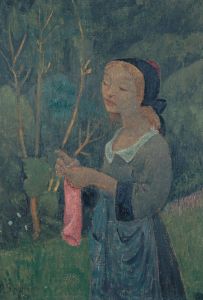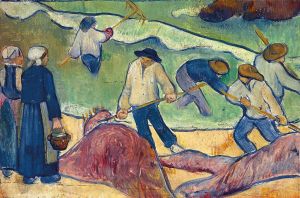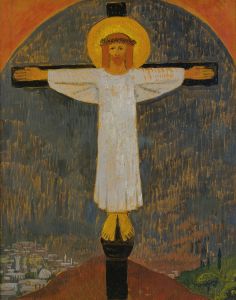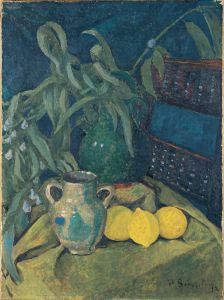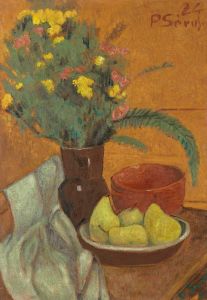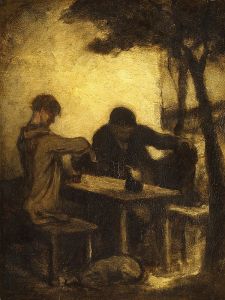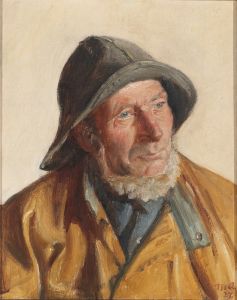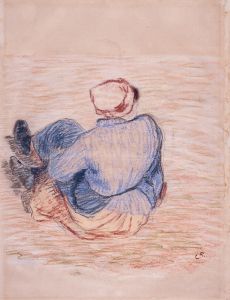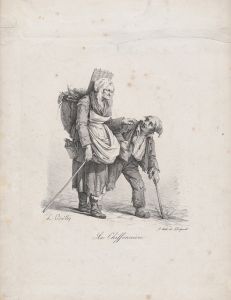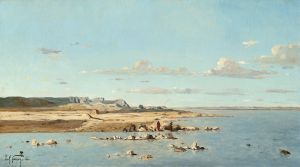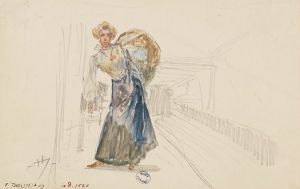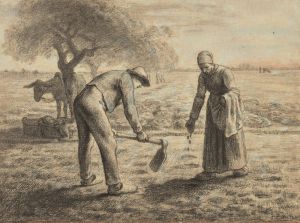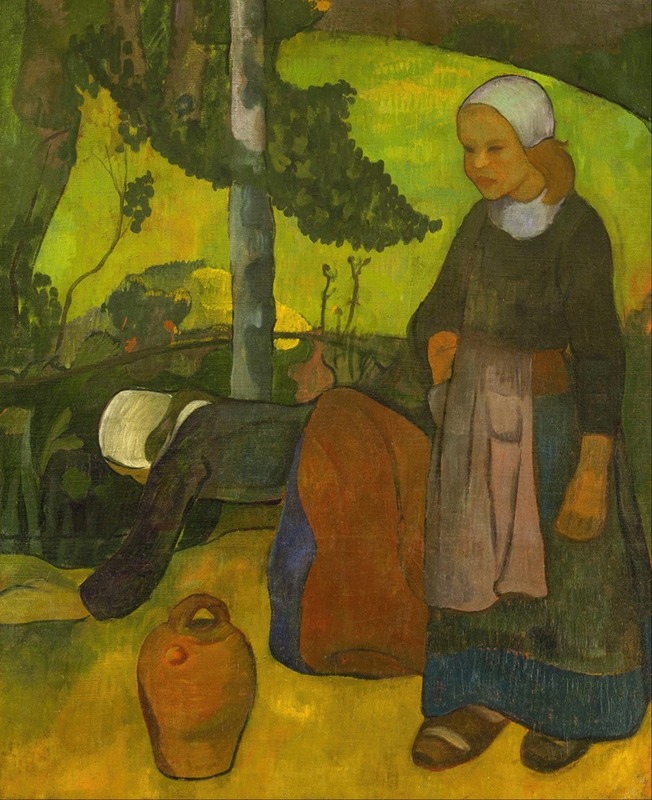
Washerwomen
A hand-painted replica of Paul Sérusier’s masterpiece Washerwomen, meticulously crafted by professional artists to capture the true essence of the original. Each piece is created with museum-quality canvas and rare mineral pigments, carefully painted by experienced artists with delicate brushstrokes and rich, layered colors to perfectly recreate the texture of the original artwork. Unlike machine-printed reproductions, this hand-painted version brings the painting to life, infused with the artist’s emotions and skill in every stroke. Whether for personal collection or home decoration, it instantly elevates the artistic atmosphere of any space.
Paul Sérusier's painting Washerwomen is a work created by the French Post-Impressionist artist, who was a key figure in the Symbolist and Nabi movements. Sérusier, born in 1864, was known for his innovative approach to color and composition, influenced by his interactions with Paul Gauguin and the Pont-Aven School. While specific details about the creation date and context of Washerwomen are not widely documented, the painting reflects Sérusier's characteristic style, which often emphasized simplified forms, bold colors, and a focus on symbolic meaning over naturalistic representation.
The subject of washerwomen, or women engaged in the act of washing clothes, was a common theme in 19th-century European art. It often served as a way to depict rural or working-class life, aligning with the broader interest in everyday scenes during this period. Sérusier's interpretation of this theme likely reflects his interest in capturing the essence of human activity through a stylized and symbolic lens, rather than adhering to strict realism.
Sérusier's artistic philosophy was deeply shaped by his encounter with Gauguin in 1888, during a visit to Pont-Aven in Brittany. Under Gauguin's guidance, Sérusier painted The Talisman, a small landscape that became a manifesto for the Nabi movement. This experience encouraged Sérusier to move away from traditional academic techniques and embrace a more abstract and decorative approach to art. While Washerwomen is not as widely studied or reproduced as some of Sérusier's other works, it likely embodies these principles, showcasing his use of flat planes of color and an emphasis on mood and atmosphere.
The painting is thought to depict washerwomen in a natural setting, possibly inspired by the rural landscapes of Brittany, where Sérusier spent significant time. The region's distinct culture and scenery were a recurring source of inspiration for many artists associated with the Pont-Aven School. Sérusier's works from this period often highlight the harmony between human figures and their environment, using simplified forms and vibrant colors to evoke a sense of timelessness and spirituality.
As with many of Sérusier's paintings, Washerwomen reflects the Nabi movement's broader goals of integrating art into everyday life and exploring the spiritual dimensions of the visual world. The Nabis, a group of artists that included Sérusier, Pierre Bonnard, and Édouard Vuillard, sought to break away from traditional artistic conventions and create works that were both decorative and deeply symbolic.
Further details about the specific provenance or exhibition history of Washerwomen are not readily available. However, the painting remains an example of Sérusier's contribution to the evolution of modern art, bridging the gap between Post-Impressionism and early 20th-century abstraction.





